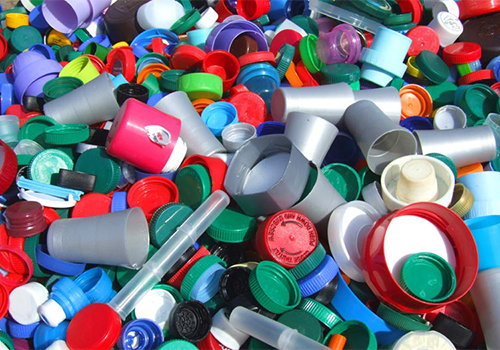What does pollution do to people and the environment?
There is research indicating that air pollution is responsible for 2 million deaths around the world, according to The Huffington Post. In regards to the environment, as just about every product contains plastic. Furthermore, plastics from sewage plants, shipping facilities and oil and gas refineries dispense plastic byproducts into the ocean.
Phys.org notes that 28 million tons of plastic ended up in the ocean in 2012. The Huffington Post draws a link between environmental pollution and the toll on human health, revealing that ozone pollution causes 470,000 deaths annually. Ozone pollution occurs when air pollution from facilities, like automobile plants, interact with the atmosphere.
 Web MD also highlights the effects of indoor air pollution on humans and the risk of contracting respiratory ailments, such as asthma and allergies. Cigarette smoke is also classified as a pollutant, with experts believing that 90 percent of lung cancer cases are traced to smoking. Smoking, along with second-hand smoke, increases a person's chances of succumbing to heart attacks and strokes. An article from USA Today mentions that air pollution can have an adverse effect on growing brains in children, causing such problems as autism and schizophrenia. Pregnant mothers living in a polluted environment can also have a negative effect on a child's health.
Web MD also highlights the effects of indoor air pollution on humans and the risk of contracting respiratory ailments, such as asthma and allergies. Cigarette smoke is also classified as a pollutant, with experts believing that 90 percent of lung cancer cases are traced to smoking. Smoking, along with second-hand smoke, increases a person's chances of succumbing to heart attacks and strokes. An article from USA Today mentions that air pollution can have an adverse effect on growing brains in children, causing such problems as autism and schizophrenia. Pregnant mothers living in a polluted environment can also have a negative effect on a child's health.What are some effects of human activities on the environment?
Some of the effects of human activities on the environment include global warming, habitat destruction, land degradation, overpopulation, pollution and resource depletion. These effects are a result of human activities such as intensive farming, overexploitation of minerals and natural resources, industrialization, deforestation, illegal dumping of waste materials, poor disposal of waste materials and overfishing.
Industrialization and intensive farming are huge contributors to air, soil and water pollution. Greenhouse gases in large amounts, such as carbon dioxide and methane, cause the Earth’s temperatures to rise, a phenomenon known as global warming.
How does water pollution affect the environment?
While water pollution has many impacts on the environment, its effects are most readily visible in the lakes and streams where pollution kills fish and other aquatic life. According to TEACH Great Lakes, biologists declared Lake Erie a dead lake in the 1960s, yet it was full of life. The problem was that it was the wrong kind of life, which caused a disruption in the lake due to pollution.
 Toxic heavy metals are one type of pollution that affects lakes and rivers. Often, heavy metals come from industrial processes, such as the steel mills that once surrounded many of the Great Lakes. These materials are toxic to fish and shellfish, but they have the potential to affect the rest of the food chain, including the animals that live on land as well as those in the water.
Toxic heavy metals are one type of pollution that affects lakes and rivers. Often, heavy metals come from industrial processes, such as the steel mills that once surrounded many of the Great Lakes. These materials are toxic to fish and shellfish, but they have the potential to affect the rest of the food chain, including the animals that live on land as well as those in the water.
Bacteria and other pollutants from sewage affect the health of organisms living in the water as well as those who drink it. Clean drinking water is an issue for many animals.
What effect does acid rain have on the environment?
Acid rain has many environmental side effects, but its impact is largely seen on water sources and aquatic environment, such as lakes, wetlands and streams, explains National Geographic. Acid rain reduces the alkalinity, the capacity of water to neutralize acid, and thus increases the acidity of the water, leading to a weaker ecosystem. Acidic water is also toxic to fish, clams, crayfish and other aquatic animals.
 When acid rain falls on forests, it washes away and dissolves the nutrients that help trees and plants grow, such as magnesium and calcium. It releases aluminum that reduces the trees' capacity to absorb water. While trees are not able to absorb naturally occurring aluminum, acid rain can convert it to aluminum nitrate or aluminum sulfate that can harm the trees. It weakens the trees' natural defenses and makes them more vulnerable to damage due to cold weather, insects, diseases and other ecological stressors. The acidic rain also wears away the protective coating of leaves, making them more susceptible to damage and preventing them from photosynthesizing properly.
When acid rain falls on forests, it washes away and dissolves the nutrients that help trees and plants grow, such as magnesium and calcium. It releases aluminum that reduces the trees' capacity to absorb water. While trees are not able to absorb naturally occurring aluminum, acid rain can convert it to aluminum nitrate or aluminum sulfate that can harm the trees. It weakens the trees' natural defenses and makes them more vulnerable to damage due to cold weather, insects, diseases and other ecological stressors. The acidic rain also wears away the protective coating of leaves, making them more susceptible to damage and preventing them from photosynthesizing properly.
What are the effects of solid waste management?
Proper solid waste management reduces health risks to the public and lessens adverse environmental impacts, such as air, water and land pollution. Some generally accepted methods of waste disposal include using landfills, recovering and recycling, composting, incinerating and minimizing wastes.
Solid waste is generated on a daily basis in bulk quantities. The sources of solid waste include organic household waste, toxic chemicals from industrial plants, agricultural waste and medical waste. Proper solid waste management techniques should be implemented to avoid the transmission of infectious diseases and prevent the contamination of various environmental resources. Some common practices that the average person can do to help in the proper disposal of waste include segregation of waste into biodegradable and non-biodegradable matter. Any recyclable materials can also be set aside to be reused for other purposes.
How does biomass affect the environment?
It is possible to use biomass feedstocks to generate all the fuel and other chemicals that producers currently use fossil fuels to make, according to Green Energy Ohio. Feedstock refers to any organic substance that could convert to energy; this includes residues from logging, sewage, farm animal waste and other forms of industrial waste.
What causes ocean pollution?
Ocean pollution is caused by numerous industrial and domestic activities, which include oil spills, garbage dumping, sewage and factory-waste disposal and the use of toxic pesticides. These activities pollute the oceans through drains, rivers and direct dumping. According to All Recycling Facts, land-based activities account for more than 80 percent of ocean pollution.
Large-scale oil spills are major contributors to ocean pollution. They cause serious damage in sensitive marine areas and the death of numerous marine animals. Small leaks that occur on a regular basis also add to ocean pollution, such as from offshore-drilling rigs and boats.
Ocean pollution is exacerbated by toxic pesticides washed away from farmlands into rivers and streams, which flow into the ocean. The toxic gases produced by power stations and vehicles also contribute to ocean pollution in the form of acid rain.
What is industrial pollution?
Industrial pollution is the contamination of the environment by businesses, particularly plants and factories, that dump waste products into the air and water. Industrial waste is one of the largest contributors to the global pollution problem endangering people and the environment.
Many dangerous pollutants, by-products of manufacturing, enter the air and water, risking health and lives. Common pollutants include carbon monoxide, formaldehyde, mercury and lead. Waste released into the water systems, including medical waste, kills river and ocean life. Cities are particularly at risk for the direct effects of industrial pollution, but the ultimate results filter down throughout the environment.
What are some effects of land pollution?
Land pollution is caused by deforestation, agricultural activities, mining activities, overcrowded landfills, industrialization, nuclear wastes and sewage treatment. To cut back on land pollution, many steps should be taken. Individuals must recycle, reduce the use of pesticides and other harmful chemicals, avoid purchasing products that are packaged in excessive packing materials that will end up on the landfill and learn how to prepare and eat organic foods that are grown without pesticides.
What is non-biodegradable waste?
Non-biodegradable waste is a type of waste that can not be broken down into its base compounds by micro-organisms, air, moisture or soil in a reasonable amount of time. Non-biodegradable waste is an environmental concern, as it threatens to overwhelm landfills and create disposal problems.
 Unlike biodegradable waste, such as food and other organic waste, non-biodegradable waste remains stable indefinitely. It includes items like rubber tires, Styrofoam, plastic, fiberglass and metals. Because non-biodegradable waste cannot be broken down, recycling is the best option for managing it. Many businesses and municipalities have special bins designated specifically for the disposal of non-biodegradable waste.
Unlike biodegradable waste, such as food and other organic waste, non-biodegradable waste remains stable indefinitely. It includes items like rubber tires, Styrofoam, plastic, fiberglass and metals. Because non-biodegradable waste cannot be broken down, recycling is the best option for managing it. Many businesses and municipalities have special bins designated specifically for the disposal of non-biodegradable waste.
What is a possible solution for water pollution?
Solutions for fighting water pollution include: fighting global warming, reducing oil emissions and improving sewage infrastructure. Other solutions using green products for cleaning and pesticides is one possible solution for water pollution.
There are multiple solutions for reducing water pollution, and people can participate in different ways depending on where they live. For those who live in the city, walking or using electric public transportation are good alternatives to contributing to emissions from cars and buses. Alternatively, for those who live in a more suburban or rural area, an electric car is an option to consider. No matter where a person lives, reducing use of man-made, dangerous chemicals for cleaning purposes is an essential part of keeping water clean.
What is Environmental Education?
Environmental
Education (EE) is a methodology in which people pick up familiarity with their
surroundings and secure learning, abilities, values, experiences, and passion,
all of which will empower them to act – separately and aggregately – to take
care of present and future environmental issues. It is the study of relationship and interactions between
natural and human systems. In short, environmental education is provided so
that people can have a better understanding of the world around them and know
how to take care of it properly so that the world can be a better place.
Environmental education is a complex field, and it covers a variety of
different topics that are related to the environment.




For more information visit here : Reduces the Waste Sensitive ProductsFind the best reduces the waste sensitive products at captemp.com. Storage: Monitoring of temperatures, humidity and other environmental conditions. HACCP reports compatibility.
ReplyDeleteWaste Sensitive Products
ReplyDeleteFind the best reduces the waste sensitive products at captemp.com. Storage: Monitoring of temperatures, humidity and other environmental conditions. HACCP reports compatibility.